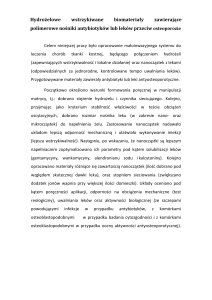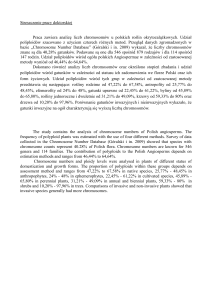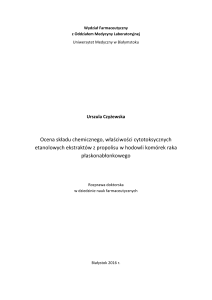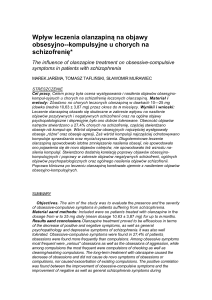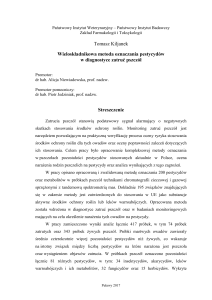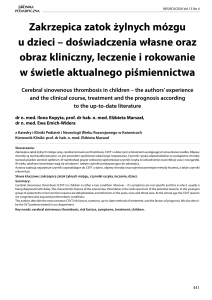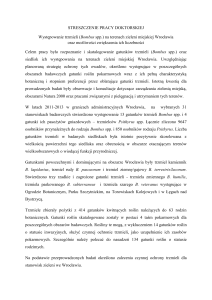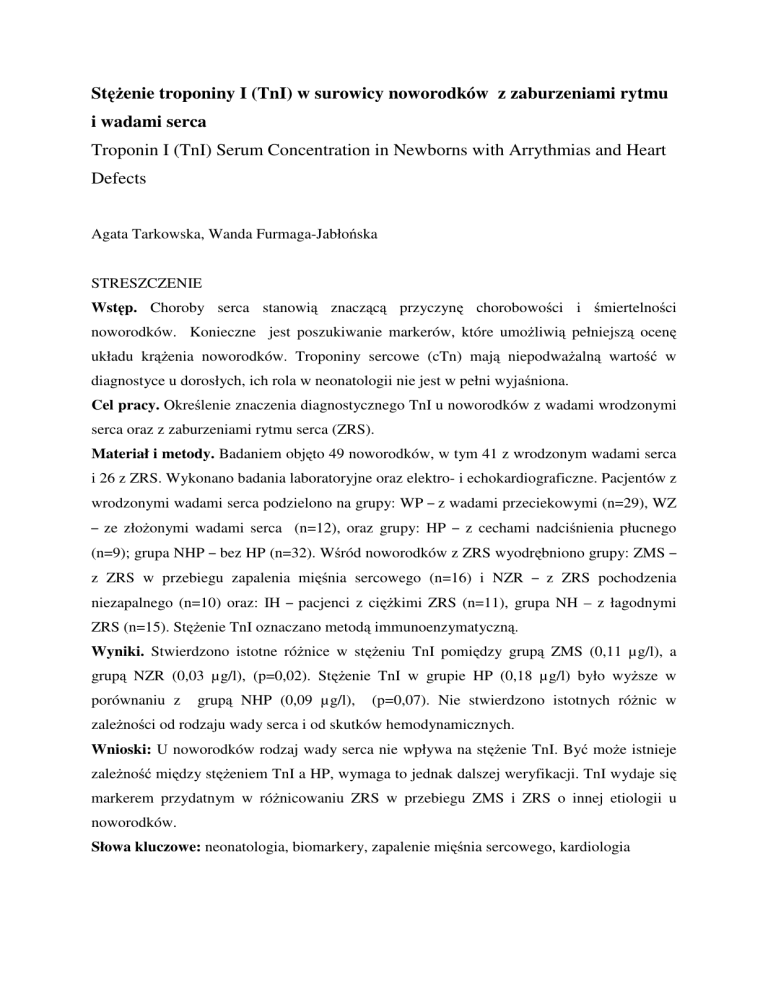
Stężenie troponiny I (TnI) w surowicy noworodków z zaburzeniami rytmu
i wadami serca
Troponin I (TnI) Serum Concentration in Newborns with Arrythmias and Heart
Defects
Agata Tarkowska, Wanda Furmaga-Jabłońska
STRESZCZENIE
Wstęp. Choroby serca stanowią znaczącą przyczynę chorobowości i śmiertelności
noworodków. Konieczne jest poszukiwanie markerów, które umożliwią pełniejszą ocenę
układu krążenia noworodków. Troponiny sercowe (cTn) mają niepodważalną wartość w
diagnostyce u dorosłych, ich rola w neonatologii nie jest w pełni wyjaśniona.
Cel pracy. Określenie znaczenia diagnostycznego TnI u noworodków z wadami wrodzonymi
serca oraz z zaburzeniami rytmu serca (ZRS).
Materiał i metody. Badaniem objęto 49 noworodków, w tym 41 z wrodzonym wadami serca
i 26 z ZRS. Wykonano badania laboratoryjne oraz elektro- i echokardiograficzne. Pacjentów z
wrodzonymi wadami serca podzielono na grupy: WP – z wadami przeciekowymi (n=29), WZ
– ze złożonymi wadami serca (n=12), oraz grupy: HP – z cechami nadciśnienia płucnego
(n=9); grupa NHP – bez HP (n=32). Wśród noworodków z ZRS wyodrębniono grupy: ZMS –
z ZRS w przebiegu zapalenia mięśnia sercowego (n=16) i NZR – z ZRS pochodzenia
niezapalnego (n=10) oraz: IH – pacjenci z ciężkimi ZRS (n=11), grupa NH – z łagodnymi
ZRS (n=15). Stężenie TnI oznaczano metodą immunoenzymatyczną.
Wyniki. Stwierdzono istotne różnice w stężeniu TnI pomiędzy grupą ZMS (0,11 µg/l), a
grupą NZR (0,03 µg/l), (p=0,02). Stężenie TnI w grupie HP (0,18 µg/l) było wyższe w
porównaniu z
grupą NHP (0,09 µg/l),
(p=0,07). Nie stwierdzono istotnych różnic w
zależności od rodzaju wady serca i od skutków hemodynamicznych.
Wnioski: U noworodków rodzaj wady serca nie wpływa na stężenie TnI. Być może istnieje
zależność między stężeniem TnI a HP, wymaga to jednak dalszej weryfikacji. TnI wydaje się
markerem przydatnym w różnicowaniu ZRS w przebiegu ZMS i ZRS o innej etiologii u
noworodków.
Słowa kluczowe: neonatologia, biomarkery, zapalenie mięśnia sercowego, kardiologia
ABSTRACT
Introduction. Heart diseases state significant reason of morbidity and mortality in newborns.
Cardiac troponins are of unquestionable role as markers of cardiac injury in adults. Their use
in neonatology is not routine yet.
Aim of study. Evaluation of diagnostic usefulness of TnI in newborns with arrhythmias and
congenital heart defects (CHD).
Material and methods. The study included 49 newborns with heart arrhythmias (n=26) and
CHD (n=41). All patients underwent diagnostic examinations of circulatory system and had
laboratory tests. Patients with CHD were divided into groups: WP – with simple shunt
(n=29); WZ – with combined heart defects (n=12), and group HP – patients with HP (n=9);
group NHP – patients without HP (n=32). Among neonates with arrhythmias following
groups were separated: group ZMS: patients with arrhythmias of inflammatory origin; group
NZR: patients with noninflamatory arrhythmias and group IH – patients with severe
arrhythmias; group NH – patients with mild arrhythmias. TnI serum level was evaluated by
use of immunoenzymatic method.
Results. Statistically significant differences of TnI concentrations between group ZMS
(0,11µg/l) and group NZR (0,03µg/l) were stated (p=0.02). TnI concentration in group HP
(0,18µg/l) was higher in comparison to group NHP (0.09 µg/l), (p=0.07). No significant
differences were stated concerning type of CHD and severity of arrhythmias.
Conclusions. TnI seems to be useful marker in differential diagnosis of myocarditis and
arrhythmias connected with other etiology in newborns. The type of CHD does not influence
TnI level in newborns. There might be correlation between TnI concentration and coexistence
of pulmonary hypertension, however it still needs to be verified.
Key words: neonatology, biomarkers, myocarditis, cardiology




